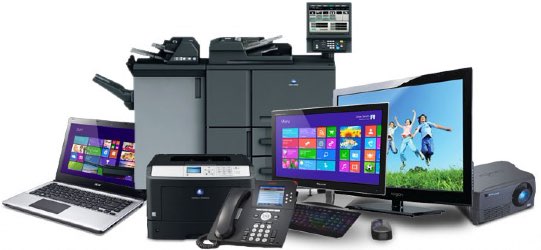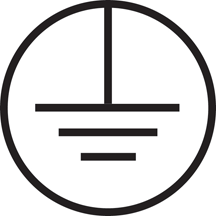What needs PAT testing?
There is a lot of confusion surrounding “what needs PAT testing”, not just within the business community, but within our own industry too! That is mainly because there is no clear guidance, but mainly because there is an ongoing argument between the PAT testing and electrician communities… but you don’t need to be affected by that.
The UK’s national standards organisation, the Portable Appliance Testing Trade Association says that PAT testing should be carried out on electrical appliances that are powered by mains electricity that are fitted with a plug, that can be removed from the mains by unplugging from the socket.
This includes all different types of plug, including the standard 3-pin plugs we all use at home and work to plug in our computers, kettles and phone chargers as well as more specialised plugs such as the round pins used on lamps in hotels, AC/DC block adaptors, and connectors used on building sites and industrial equipment for 110v, 230v and 400v equipment.
However, it also says that one PAT tester should NOT be expected to be able to test every type of appliance. For example the 400v appliance is often 3-phase, and needs an extra degree of skill set most PAT testers do not have; not through any fault of their own but they’re usually not time served industrial electrical engineers. See our industrial pages for more information.
Just the same as the confusion around appliances that have had the plug removed and are now fitted to the mains via fused spur unit; some say that the PAT tester should be testing these, but unless he is competent to safely isolate and secure the power supply he definitely should NOT do this. We actually have staff who are trained to do this, but it does not happen automatically during the PAT test, as logistics do not allow it – we’d have to turn off your power supply, and it takes a lot longer to do so pricing is very different. See our Fixed appliance testing page for more information.
So what needs PAT Testing? Any electrical appliance fitted with a plug; any detachable power lead from an appliance and any “extension lead” used to provide the appliance with power. This includes kettles, toasters, computers, printers, phone chargers, tool chargers, vacuum cleaners, fridges and so on. Anything without a plug or where the plug is not accessible will need inspecting and maybe a test but the amount of anomalies in this mean it will be much easier if we raise it with you when we see it pop up rather than try to explain all the differences here.

What needs PAT testing? All of these do
In almost every workplace in the UK there will be an electrical appliance that needs maintaining; if you use any electrical appliance fitted with a plug you need to get it PAT tested to comply with the regulations.
The regulations require you to maintain electrical equipment to safe standards to prevent danger and the only recognised way to prove you have done that is through a detailed PAT Testing Certificate. PAT testing is a form of preventative maintenance.
The PAT testing records you are provided with show that the appliance was tested as safe and the electrical readings that were found when the test took place, which support the claim that the appliance was safe.
By passing the “Visual Inspection” side of the test the engineer is confirming that the appliance was visually safe – basically this means that there is no visible damage, the plug is correct and functioning correctly, the right size fuse is in use and so on – if any of these are wrong when we do the inspection we repair or replace it. Sometimes a major issue requires additional work, a repair that takes longer than a few minutes or specialist parts or cable that has to be purchased to be fitted – when this happens we will charge for the repair however we always get your permission before we do it.
How can you help yourself to Pass PAT Testing?
You don’t really need to worry too much about this; if there is a fault we’ll repair it, after all that is why we do what we do. But to help you pass PAT testing if you do have to rewire a plug do it right. We have a blog for how to rewire a plug that will help you.
Also, if you have to change a fuse make sure you replace it like for like or check that you are using the correct fuse; don’t just put any fuse in. A fuse is intended to protect you; if you use the wrong size it may not offer you the protection you need which may result in you getting hurt.
We have other types of plug and some appliances without a plug
When we come to survey your site, or when we’re doing the job if we find other appliances or appliances connected in different ways, if we can test them there and then we will just do it. However, in some circumstances, as mentioned above, other actions may be needed. When this happens we will go through the options with you, so don’t worry about it, we won’t leave you with dangerous or unchecked appliances.
What appliances need PAT testing?
There are 2 main factors to consider to determine whether or not an electrical appliances requires a PAT test…
- The electrical ‘classification‘ of the item, and
- The ‘category‘ of the item
The class of an appliance helps to determine whether it needs testing for earth and insulation, just insulation, or simply requires a visual inspection. Some appliances, class 3 for example, don’t even need the inspection.
Electrical appliances are generally categorised into 3 classes:
- Class 1 – regarded as the most dangerous, has only basic insulation for protection and so relies on earth protection
- Class 2 – these appliances have extra, or double insulation and so doesn’t rely on earth protection, making it safer
- Class 3 – these appliances are low voltage, or battery operated, and are the safest of all electrical appliances – they rarely need a PAT test, although an inspection may be recommended for some items. If they have charging leads and adaptors – they will need testing.
Class 1 Appliances
The following appliances are usually class 1
| Photocopiers | IT power (IEC) leads |
| Washing machines | Extension cables |
| Fridge Freezers | Electric heaters |
| Vending machines | Computers |
| Bench grinders | Monitors |
| Toasters | |
| Kettles | |
| Steam irons |
Class 2 Appliances
Class 2 Appliances include
| Desktop printers | Food mixers |
| Desk lamps | Hair driers |
| CD players | Hair straighteners |
| DVD players | Vacuum cleaners |
| Lawnmowers | |
| Power drills |
Class 3 Appliances
Examples of class 3 appliances:
| Laptops | Low voltage IT units |
| Mobile phone chargers | AC Adaptor plugs |





